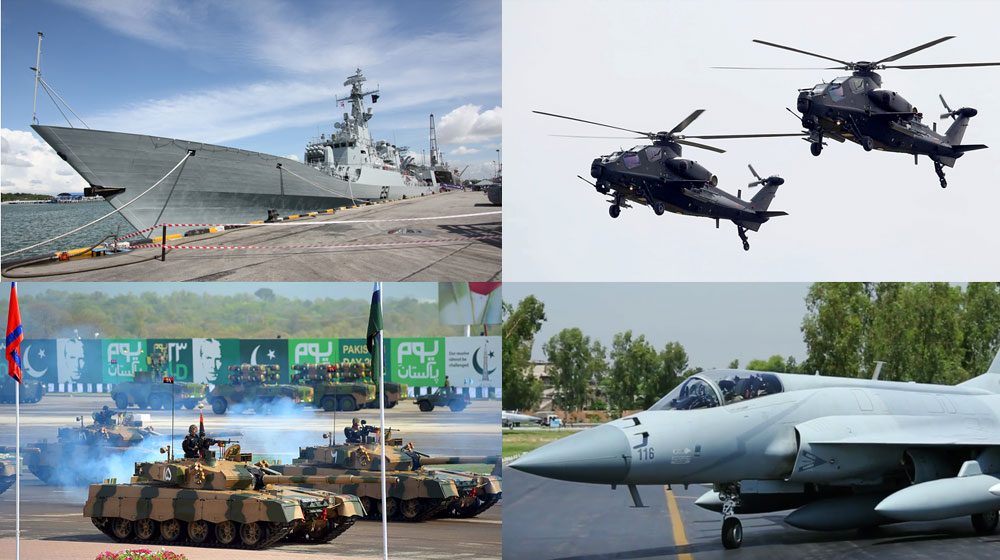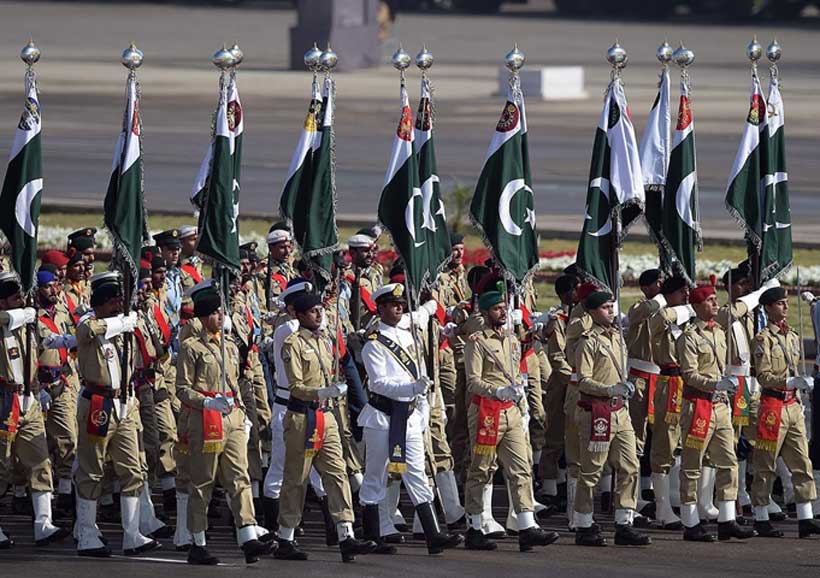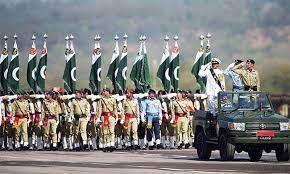ISLAMABAD: The government on Friday proposed to allocate Rs1.37 trillion for defence services in the budget for the fiscal year 2021-22, marking an increase of 6.2 per cent.
The proposed increase in the defence budget is less than what the armed forces have been getting in recent years except for FY 2019-20 in which a raise of 4.74pc was given. But by the end of that fiscal year, the defence services had overshot the allocated budget by 6.33pc.
The expenses planned to be incurred on the armed services constitute 16 per cent of the total outlay of the budget, which is Rs8.48 trillion. Moreover, the allocation is 2.54 per cent of the GDP.

The share of the defence services in the budget explains how much money is going to the armed forces in real terms. Meanwhile, calculating defence budget as percentage of the GDP indicates its burden on the national economy.
On both counts, the next year’s allocation, as of now, looks lesser than previous years.
Rs360bn to be paid to retired military men would come from civilian govt’s budget
The allocation, however, by no means gives a full picture of the actual amount the country would be spending on the armed forces. For instance, Rs360 billion, which would be paid to the retired military men, would come from the civilian government’s current expenditure instead of the defence budget. Moreover, major military acquisitions are believed to be funded separately and so are the funds for nuclear weapons programme which are placed under a secret head.

The proposed defence allocation for the next fiscal year has a special context — on the one hand, the government claims that the economy is improving and tensions with arch rival India have been somewhat managed after the initiation of the back channel talks and, on the other, the US forces are quickly pulling out of Afghanistan and it is feared that violence among the warring groups could intensify in the absence of a political settlement and Pakistan could face the spillover of instability there.
Meanwhile, the internal security threat will persist because of what looks like a resurgence of the Tehreek-i-Taliban Pakistan (TTP) and simmering militancy in Balochistan. This will compound the already complex security challenges for security forces.
A functional breakdown of the proposed allocation reveals that the armed forces have gotten a higher raise for civil works and physical assets. The civil works head caters for the military infrastructure development and repairs, while the physical assets head is about local purchases of arms and ammunition and some imports and the related costs.

The amount earmarked for physical assets has increased by 9.4 per cent to Rs391.5 billion as compared to the outgoing year. Meanwhile, civil works are proposed to be given Rs169.8 billion, which is 9.2 per cent higher than the last year’s allocation.
The other head to get a major hike of 8.64 per cent is that of operating expenses, which is being provided Rs327.14bn. This head covers expenses incurred on transport, ration, training and treatment.
Another Rs481.6bn, which makes 35 per cent of the total defence allocation, is being earmarked for employees-related expenses, salaries and allowances of servicemen.
An interesting feature of this year’s defence budget is that all services have got an equal raise of about 6.2 per cent.
The army as always has the biggest share of the pie with Rs651.5bn (47.55 per cent), Pakistan Air Force will be given Rs291.2bn (21.26 per cent), Pakistan Navy will get Rs148.7bn (10.85 per cent), and inter-services organisations are being allocated Rs278.5bn (20.32 per cent).
Meanwhile, last year’s figures for defence budget have been revised. The original allocation for FY2020-21 was Rs1.29 trillion, which has been increased to Rs1.33tr, meaning the armed forces overspent by about three per cent.


